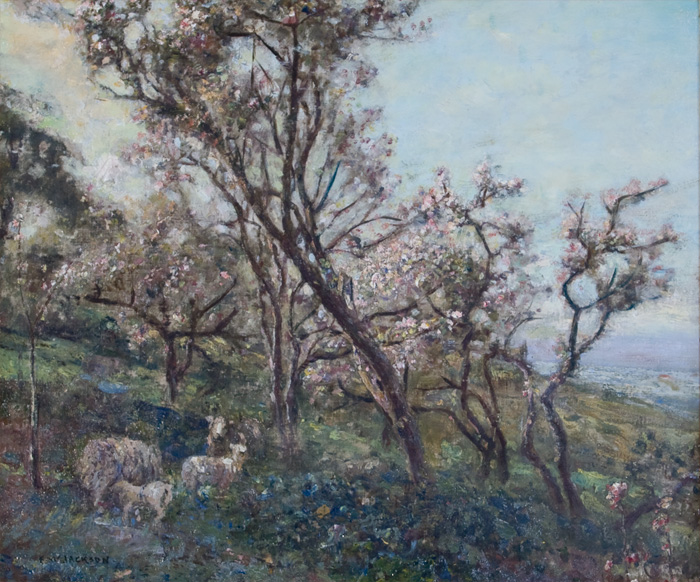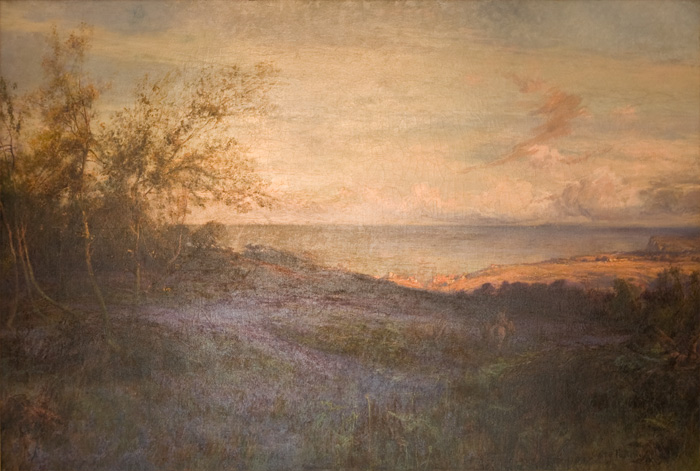
Staithes Group...
Introduction
“It must be nearly twenty-five years since there was formed in the little village of Staithes a Society of Painters who called themselves ‘The Staithes Group’. Even at this distance in time details are getting confused as to who were actually members and who merely friends of members. It is to be hoped that definite information will be collected before it becomes too late and a permanent record made”. (Whitby Gazette, July 1926).
This was the start of a short article published in Whitby nearly seventy years ago. The challenge was taken up nearly fifty years later and as each year passes it becomes more and more difficult to discover fresh information. It is hoped that this work, and the associated exhibition, will provide an illustration of the important role that The Staithes Group played in the development of British Art and encourage further research.
The coastal villages and towns of the North Yorkshire coast had been prosperous in the eighteenth century. Fishing and the transport of goods by sailing ships had provided employment and wealth for labourers and owners alike. Staithes and Runswick Bay had been busy fishing villages and Whitby had a flourishing cargo and whaling trade. Staithes had one additional claim to fame: Captain Cook had worked as a young assistant in “Old Saunderson’s” store prior to the call of the sea and his subsequent career as one of the world’s first scientific navigators. The early nineteenth century had brought to the area another source of wealth and work. The coastal area through Scarborough north through Ravenscar, Robin Hood’s Bay, Whitby, Runswick Bay, Staithes, Boulby up to Saltburn-by-the-Sea is composed of Jurassic shale and limestone. These geological formations were not only responsible for the precipitous cliffs but also the magnificent rolling countryside. It also produced materials – alum shales, jet and potash. Alum had been in demand over the centuries for medicines, dyes, filtration, and the manufacture of paper, textiles, enamels, candles and cement. Such a universal product was in constant demand and up and down the coast the mining of alum was a prosperous industry. The alum shales also contained jet, which had been highly prized since Roman times.
The mining and in-shore fishing industry declined at virtually the same time. By the middle of the nineteenth century the wealth was to be found in the great Victorian industries of engineering, coal mining, shipbuilding, wool, worsted, cotton and silk manufacture. Fortuitously these were all concentrated in the industrial North, and in Lancashire and Yorkshire in particular. This entrepreneurial wealth had created many patrons who were kea to buy paintings to furnish their homes: not the classic works to be found in the long-established stately homes, but contemporary art. The local art dealers, who were to be found in most major towns of Yorkshire, were both aware and supportive of those local artists who were beginning to establish reputations. They were often much more appreciative and supportive than their London counterparts.
The development of modern British art at the turn of the nineteenth century owed a great deal to these men who encouraged rather than lectured, and purchased rather than promised. As far as the younger members of The Staithes Group were concerned their success was aided, to a certain extent, by the older and more established artists such as Gilbert Foster, Mark Senior and Fred Jackson who had already established links with potential patrons.
Staithes and Runswick Bay are both situated at the foot of valleys with very steep sides. The houses were essentially rather primitive places with characteristic red-tiled roofs. The villagers were hardy fisherfolk, reputedly descended from Nordic raiders who had been wrecked on this dangerous coast a thousand years or so before. They were a proud, aloof and fiercely independent people who resisted any attempt at integration with the neighbouring farming and mining communities. There were no actual harbours at the villages and the lack of physical protection from the open seas made the landing of the small fishing boats a dangerous operation in rough weather. Then the complete village turned out to haul the boats, called cobbles, up the beach to safety.
It was not difficult to see the attraction of the district for the artists. Within a small geographical area, a wide range of farming and fishing activities took place. The scenery was magnificent and changed dramatically throughout the seasons. The summer light was intense with long periods of daylight. The atmosphere was completely unspoilt and tourists were then a rarity.
The locals provided a constant source of inspiration. They were also ideal models showing no artificial reactions to the repeated instructions of the artists. The fees were very small but provided a welcome income, particularly for the children. It is easy to see how this environment would be appealing to artists who refused to accept the contemporary and rather stereotyped academic styles of painting. In keeping with the “new” techniques brought over from Paris, they constantly searched to record nature and the working people going about their daily tasks.
Staithes itself presented a myriad of subjects for painting: the boats being dragged up and down the beach; the catch being unloaded, gutted or sold; women knitting while they waited for their menfolk to return, or carrying heavy baskets of mussels on their heads over the foreshore; children playing on the beach and babies sucking dummies of sugar wrapped in linen. Staithes produced every range of colour and intensity of light and shade, from the bright open sea to the dark, narrow, thronging street bustling with the life of a fishing village. The old wooden trestle bridge which formed the link between the two cliffs was another attraction. However, one day, weakened by the strain of being used too frequently as an anchor for the cobbles, it collapsed.
The atmosphere in the village could quickly change from extreme happiness to deepest tragedy. Every item of a man’s clothing was marked with his initials since this was often the only means of identifying the human flotsam which the sea eventually returned after a disaster. In these circumstances the whole village withdrew to mourn and the streets were deserted.
Inland, around the neighbouring villages of Hinderwell and Ellerby there was dairy and arable farming on rich fertile soil. On the moors there existed another separate, rural lifestyle with wide, wild, open scenery which changed dramatically with the seasons. A new railway line had been opened from Whitby to the North in December 1883, with a station at Hinderwell.
The scene was set. The artistic opportunities were unlimited and all that was needed were painters with vision, application and dedication.
Doctor Peter Phillips.
Exhibition 1993.



